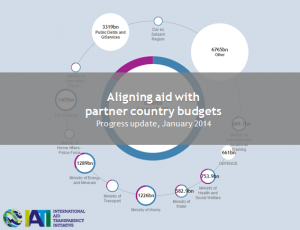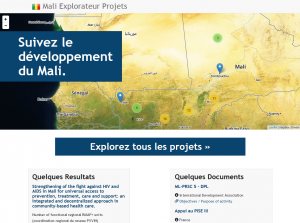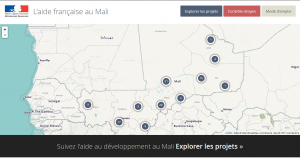After the TAG
Last week, Publish What You Fund attended the IATI TAG (Technical Advisory Group) meeting in Montreal in force. How did it go?
Well, it was great.
A fantastic community came together to work out what we need to do to improve aid data. It constantly surprises even us how much it has grown. There was strong representation from partner countries, which was a great reminder of one of the most important constituencies for this data. And a large number of donors made a lot of effort to be there and provided vital and timely insights – both in terms of exciting new areas to explore and work on, as well as advice on what was practical and realistic to ask for.
We’d like to thank the team at the IATI Secretariat, and indeed the whole IATI community, for a great TAG meeting.
There were mugs.
@johnthegeo #shreddies #IATI pic.twitter.com/lvDx5SrXlG
— Clare Maclennan (@scaricus) February 4, 2014
And we got a lot done.
Enough messing about. Just before the meeting, we posted our top 5 priorities for the TAG. So what happened?
1. Linking aid and budgets

Our big priority for a number of years has been to finalise the last major remaining piece of the IATI Standard, the “budget identifier”, which should make it easier to align aid with partner countries’ budgets. Over the last year, we’ve provided technical support to donors working to pilot the two key parts of the budget identifier.
Last week, we presented some early findings from this work, as part of the country systems session. You can see our full presentation on the right.
The pilot was partially successful – we found that about 70% of projects (by volume) can be automatically mapped to partner country ministries and departments. To get the remaining 30% will require additional codes to be added into systems, or manual coding later. By contrast, it proved much more difficult to establish whether projects were capital (e.g. a new school) or recurrent (e.g. teachers’ salaries).
We’re consulting with other members of the group, and will bring forward proposals to the IATI Steering Committee to finalise the budget identifier this year. The next (and much more exciting step!) will then be to get this built into systems.
2. Data quality
We used the TAG to launch our consultation around the 2014 Aid Transparency Index. We want as much feedback from the community as possible – donors, partner countries, civil society and independent citizens – to help us shape our next Index. We want to provoke a thoughtful discussion around what exactly donors should be publishing in their IATI data and how we assess this. At the same time, we’re keen to keep the methodology as stable as possible, so we’re not planning any radical changes this year. We’ve therefore structured the consultation around our existing indicators.
You can feed into the 2014 Index consultation on Github. If you have any other feedback that you’d like to share with us on the Index, please do get in touch!
It’s fair to say that there is a keen interest among members of the TAG to improve IATI data quality, and make sure that IATI really delivers on its promises. In this, we rather concur with David Megginson’s tweet at the end of the TAG:
I left the #IATI TAG hopeful, not because there are no problems, but because I saw a community strong enough to solve them.
— David Megginson (@david_megginson) January 30, 2014
3. Results
When we collected data for our 2013 Index, we found that only 16 organisations were publishing results information in IATI. We took the opportunity at the TAG to speak with publishers about this and find out more about the difficulties they face. The feedback we got ranged from systems issues (getting the results information they collect in the right format) to the need to standardise results in IATI (adding lists for different kinds of results indicators and at different levels – country, programme and activity). We know organisations are collecting and publishing results data but in lots of different ways, so the challenge now is how can we make sure this information is captured and published to IATI in a way that’s useful. We’re going to do some thinking about this in the coming months and reach out to others for suggestions, so watch this space.
4. Use of the data

There was a lot of interest at the TAG around data use. Our position has always been that use has to come after data – in other words: there’s little point trying to get people to use data until there’s enough of it, and it’s of sufficient quality. As we and others keep saying: a lot more needs to be done on improving the quality of the data, and that will continue to be a core focus of our work, no matter how unglamorous it may sometimes be.
But at the same time, there is some detailed, comprehensive data in IATI now, so we can start to do some pretty cool stuff with it. We showed a country portal we put together showing aid projects in Mali from five donors and two NGOs, as well as another prototype showing development and humanitarian aid to the Philippines in the aftermath of typhoon Haiyan in November 2013 (see this blog for more background on that).
IATI gave a sneak preview of a new country tracker that will show where the gaps are as well as what data is currently available, drawing on both IATI and other sources. It will be launched at the Mexico GPEDC meeting, and we’ll be following the development closely on Github.

Finally, the day after the IATI TAG, France launched a new country portal for Mali, showing all French aid projects there. It’s particularly interesting because it uses IATI data and it’s open source (developed by our friends at OKFN). Expect more of these in the near future, as France rolls out its commitment to publish for its 15 priority countries over the next few months. It would be great if this portal was then extended to include other donors’ aid data.
5. Humanitarian flows
Most of the TAG was focused on the nuts-and-bolts of improving data quality and discussing the finer points of the IATI Standard – including an important workshop on improving the geocoding standard.
However, there was also opportunity to look at how IATI may extend to other flows, including humanitarian aid. The TAG provided a great opportunity to inject new momentum into this process, and there was support for establishing a working group to carry forward the work on a humanitarian extension. We’re keen to be involved in that group, so get in touch if you are too!
How did you find it?
If you were at the TAG, followed it from afar on Twitter, or are just interested in how IATI progresses – we’d love to hear your thoughts, so please get in touch!
- Mark Brough: @mark_brough
- Rachel Rank: @rachelerank
- Shreya Basu: @basushreya10

